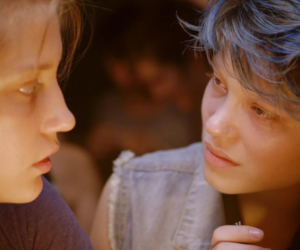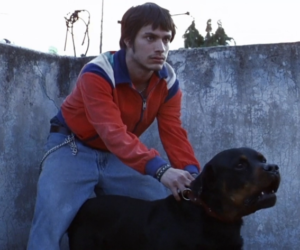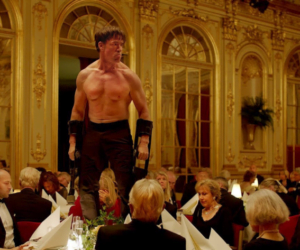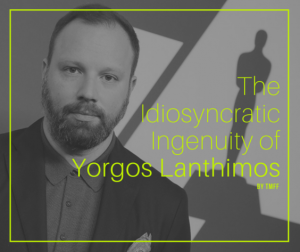In the last two years, Russia has been in news headlines for all the wrong reasons: a terrible war, coupled with increasing scrutiny over its citizens. These days, Russian filmmakers might lack the freedom of expression they deserve – something that also held true back in Soviet times. However, even so, Russian art in general – be it literature, music of cinema, has been some of the finest worldwide, for centuries.
Russian cinema, with its rich tapestry of narratives and visual styles, stands as a testament to the depth and diversity of human experience. From the stark landscapes of Siberia to the bustling streets of Moscow, Russian filmmakers have crafted stories that resonate with audiences worldwide. Let’s embark on a journey to uncover the main characteristics that define this captivating cinematic tradition, exploring examples beyond Tarkovsky, including “Solaris” (1972) and “Stalker” (1979).
Socio-Political Commentary
Russian filmmakers have long used cinema as a tool for social and political critique. Take, for instance, the works of Andrey Zvyagintsev, whose film “Leviathan” (2014) offers a searing indictment of corruption and injustice in contemporary Russian society. Set against the backdrop of a small coastal town, the film follows a man’s desperate struggle against a corrupt mayor and a legal system stacked against him. Through its gripping narrative and powerful performances, “Leviathan” sheds light on the complexities of power and morality.
Introspective Themes
Russian cinema often delves into the depths of the human psyche, exploring themes of identity, guilt, and existential angst. In “The Return” (2003) by Andrey Zvyagintsev, two brothers embark on a journey with their estranged father, whose sudden return after years of absence sparks a chain of events that force them to confront their inner demons. Through its haunting imagery and nuanced characterisation, “The Return” delves into the complexities of family dynamics and the search for meaning in a world fraught with uncertainty.
Visual Poetry
Russian filmmakers possess a unique talent for crafting visually arresting imagery that lingers in the mind long after the credits roll. Take, for example, the films of Sergei Parajanov, whose masterpiece “The Colour of Pomegranates” (1969) unfolds as a series of stunning tableaux vivants inspired by the life and poetry of Armenian troubadour Sayat-Nova. Through its sumptuous visuals and evocative symbolism, “The Colour of Pomegranates” offers a mesmerising exploration of art, spirituality, and cultural identity.
Long Takes and Slow Pacing
Russian cinema often favours a contemplative approach to storytelling, allowing scenes to unfold at a leisurely pace. In Alexander Sokurov’s “Russian Ark” (2002), the camera glides effortlessly through the corridors of the Hermitage Museum in St. Petersburg, capturing centuries of Russian history and culture in a single, uninterrupted take. As the camera moves from room to room, viewers are transported on a journey through time, immersing themselves in the beauty and grandeur of Russia’s cultural heritage.
Spiritual and Religious Themes
Russian filmmakers frequently explore themes of faith, redemption, and transcendence in their work. Consider Andrei Tarkovsky’s “Andrei Rublev” (1966), a sprawling epic that chronicles the life of the iconic Russian iconographer amidst the tumult of medieval Russia. Through its meditative tone and profound symbolism, “Andrei Rublev” invites viewers to contemplate the role of art and spirituality in a world torn apart by violence and despair. Additionally, Tarkovsky’s “Solaris” (1972) presents a profound meditation on memory, identity, and the nature of reality, as a psychologist grapples with his own guilt and existential questions aboard a space station orbiting a mysterious planet.
Realism and Gritty Portrayal
Russian cinema has a long tradition of gritty realism, offering unflinching portrayals of life’s harsh realities. In “The Fool” (2014) by Yuri Bykov, a plumber discovers evidence of widespread corruption in his small town and must confront the corrupt officials responsible for the plight of its residents. Through its stark imagery and powerful social commentary, “The Fool” exposes the moral decay at the heart of contemporary Russian society.
Cultural and Historical Context
Russian filmmakers often draw inspiration from the country’s rich cultural heritage and turbulent history. In “War and Peace” (1966) by Sergei Bondarchuk, Tolstoy’s epic novel is brought to life on the silver screen, capturing the grandeur and tragedy of Napoleonic Russia with breathtaking scope and ambition. Through its sweeping narrative and epic scale, “War and Peace” offers a vivid portrait of a nation at war with itself and its neighbours. Additionally, Tarkovsky’s “Stalker” (1979) reflects on themes of existentialism, spirituality, and the human condition under oppressive regimes, as a guide leads two clients into a mysterious area called the Zone, where their deepest desires may be fulfilled.
In conclusion, Russian cinema stands as a testament to the resilience and creativity of the human spirit. From the philosophical musings of Tarkovsky to the gritty realism of Bykov, Russian filmmakers continue to push the boundaries of artistic expression, offering audiences a glimpse into the complexities of the Russian soul.
















